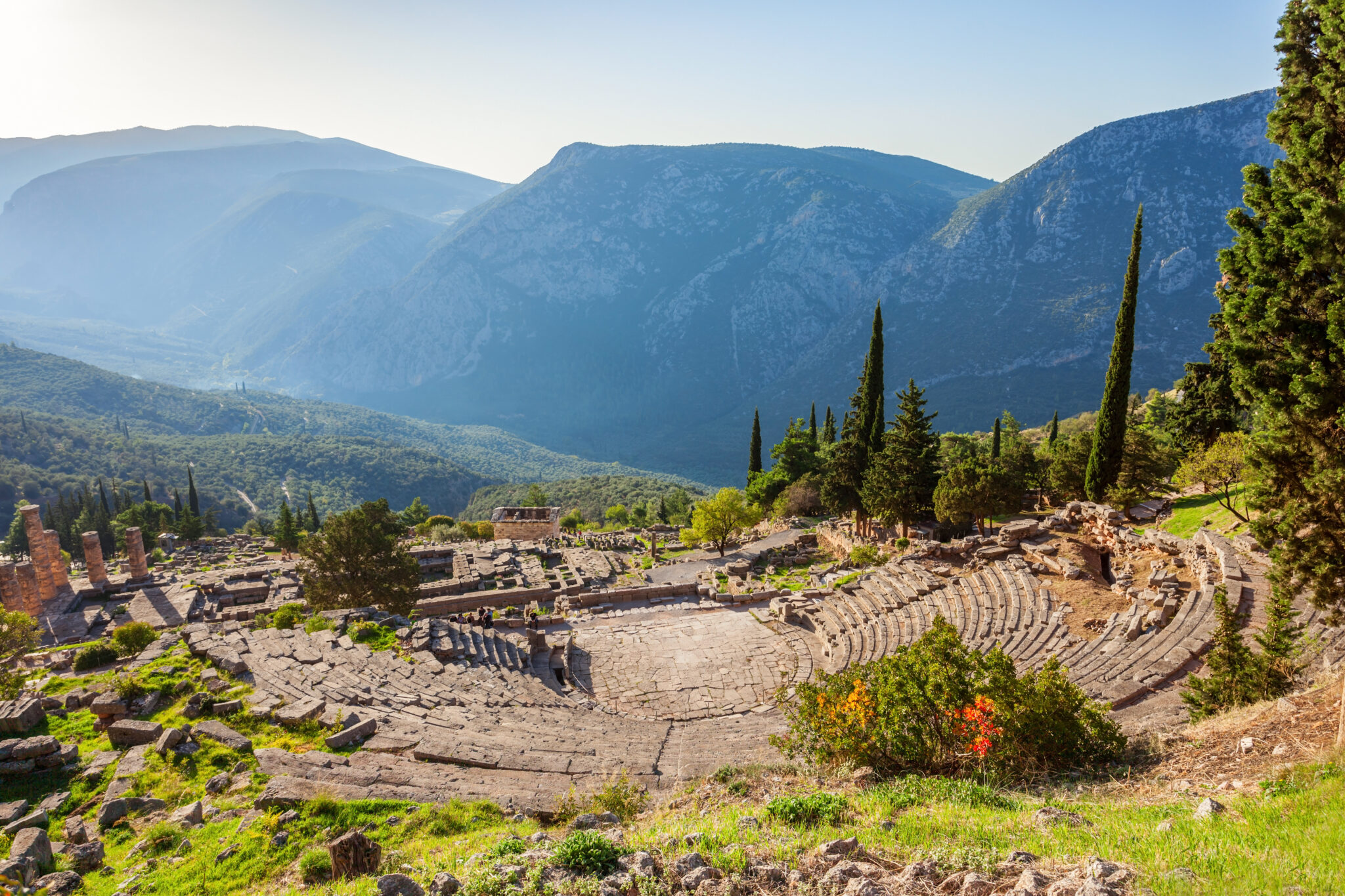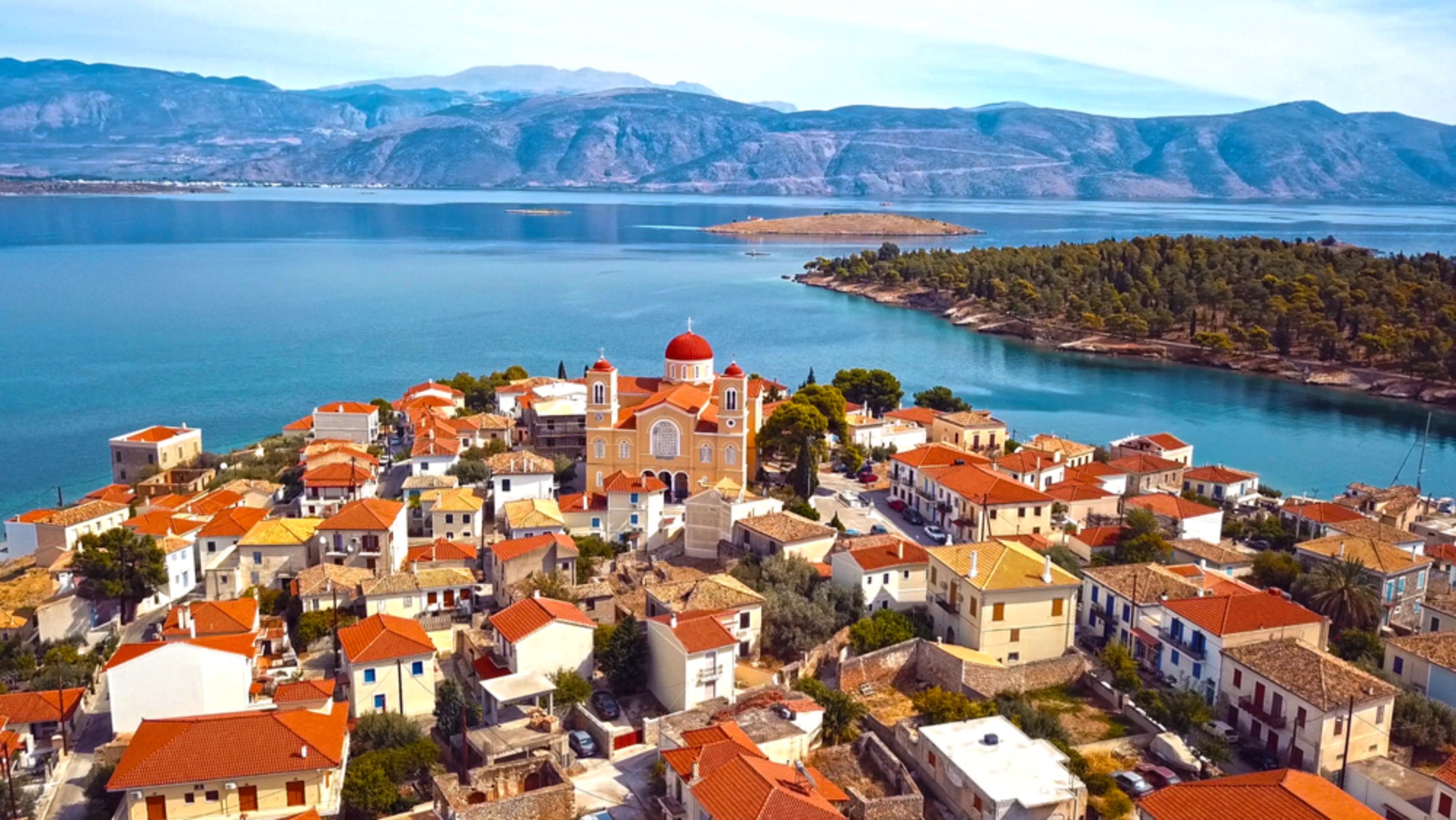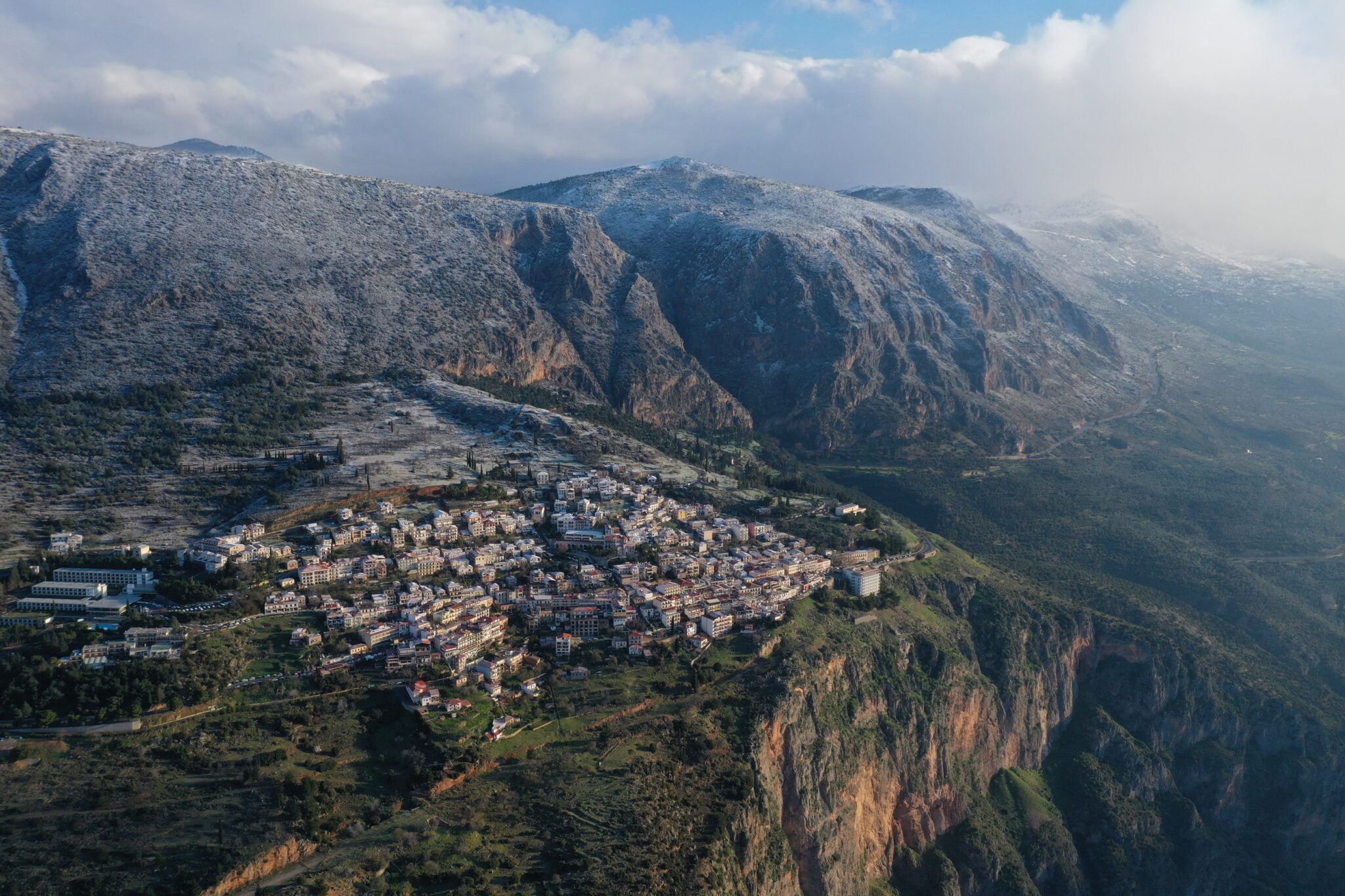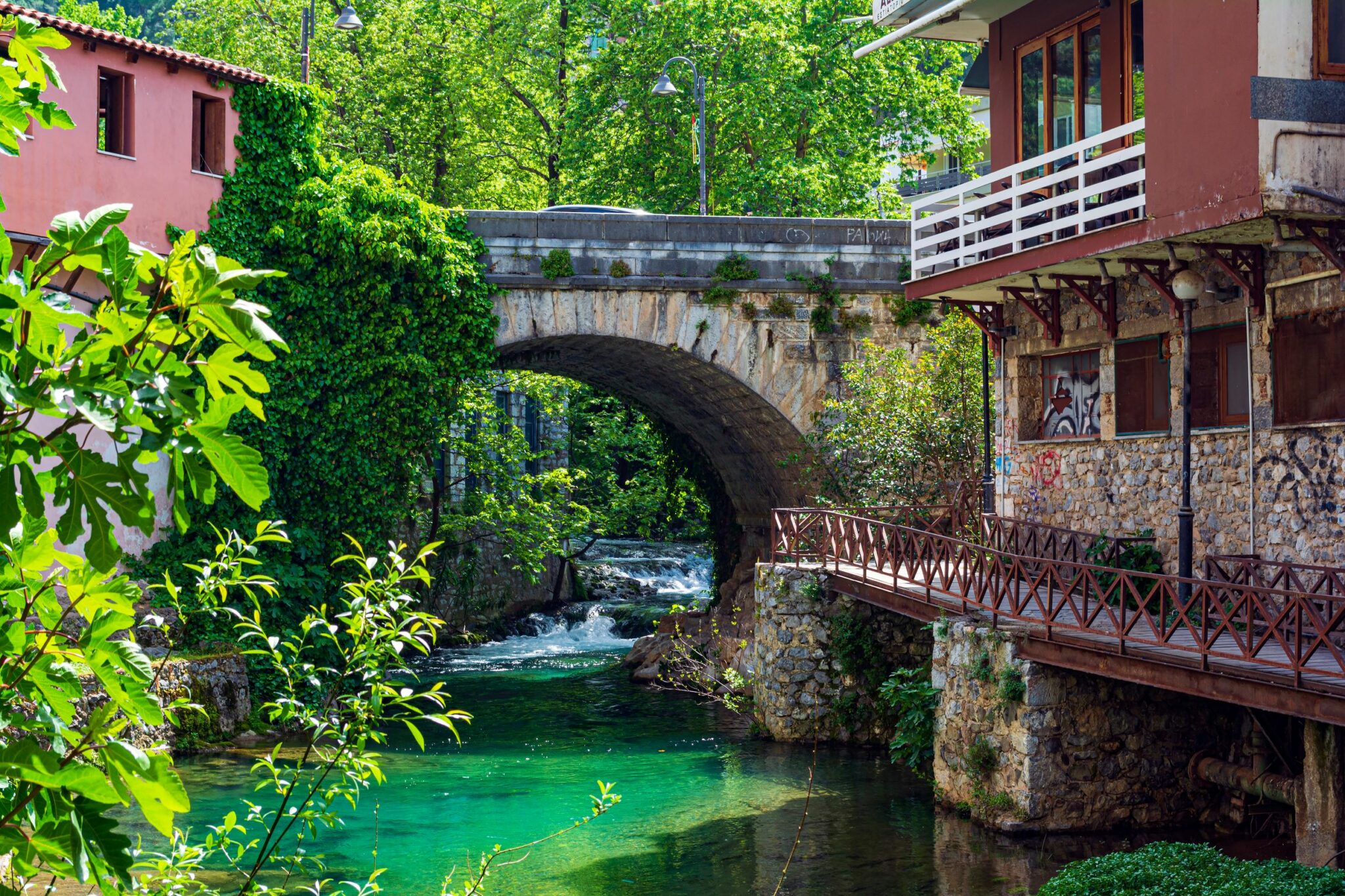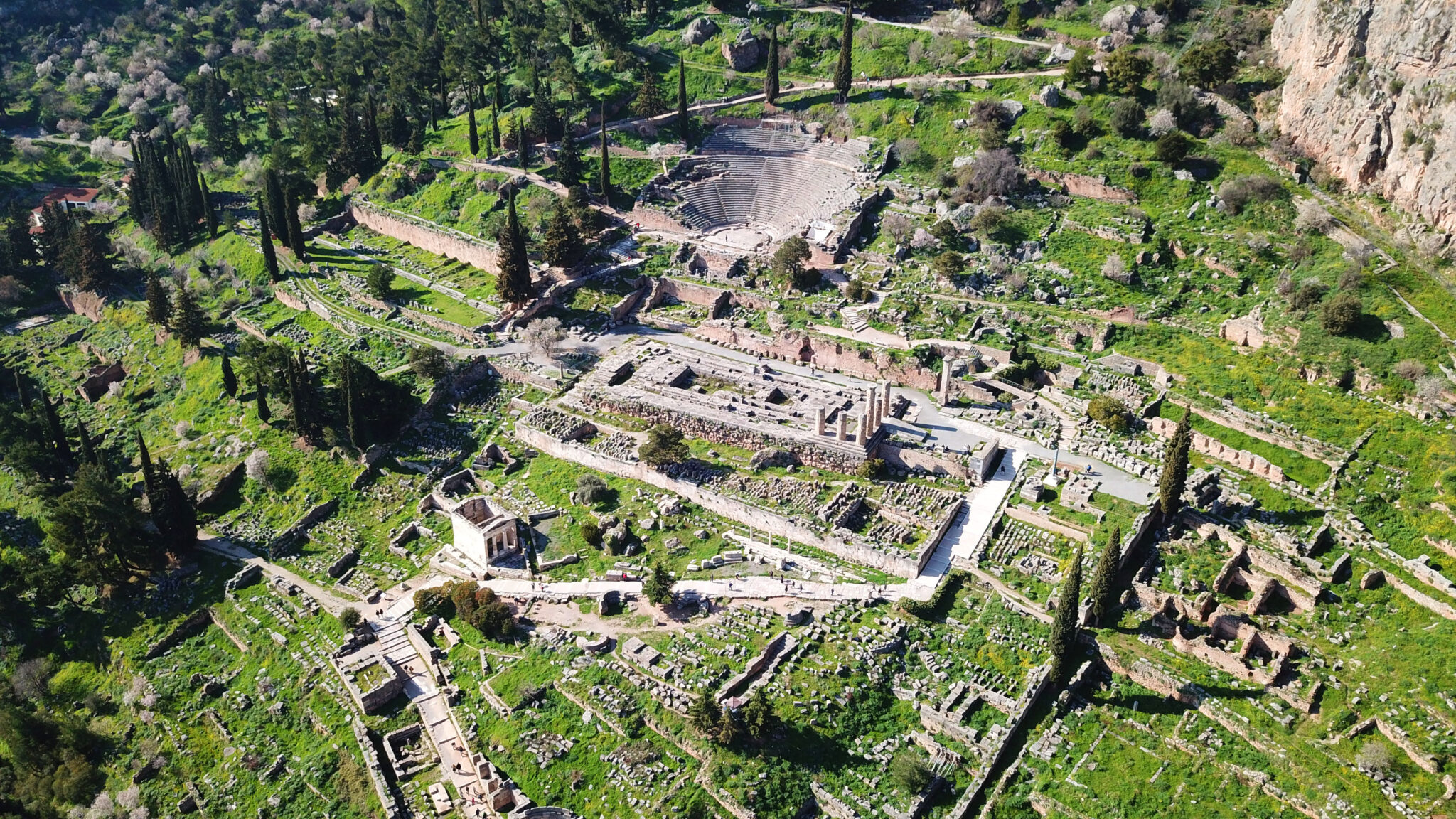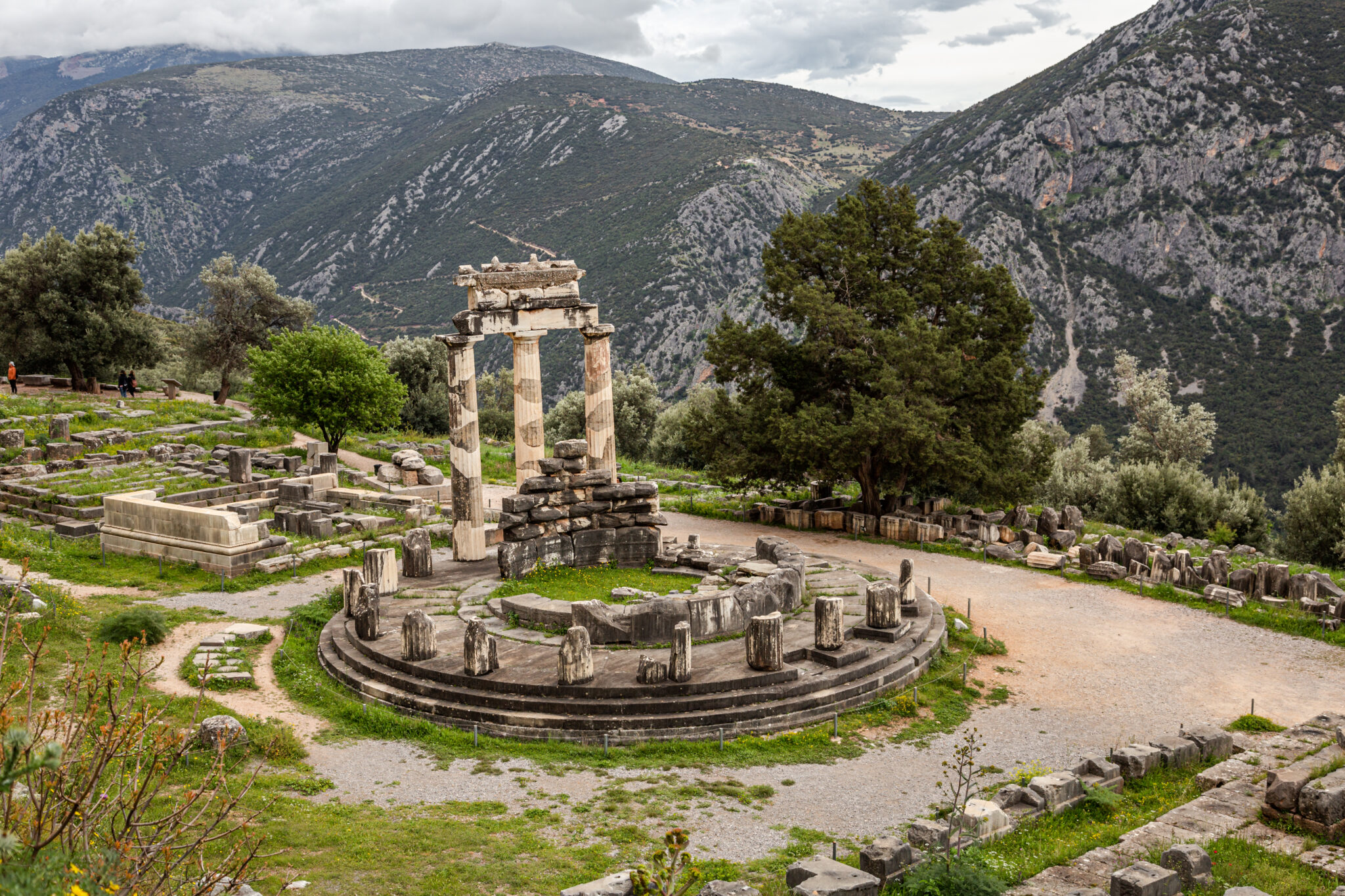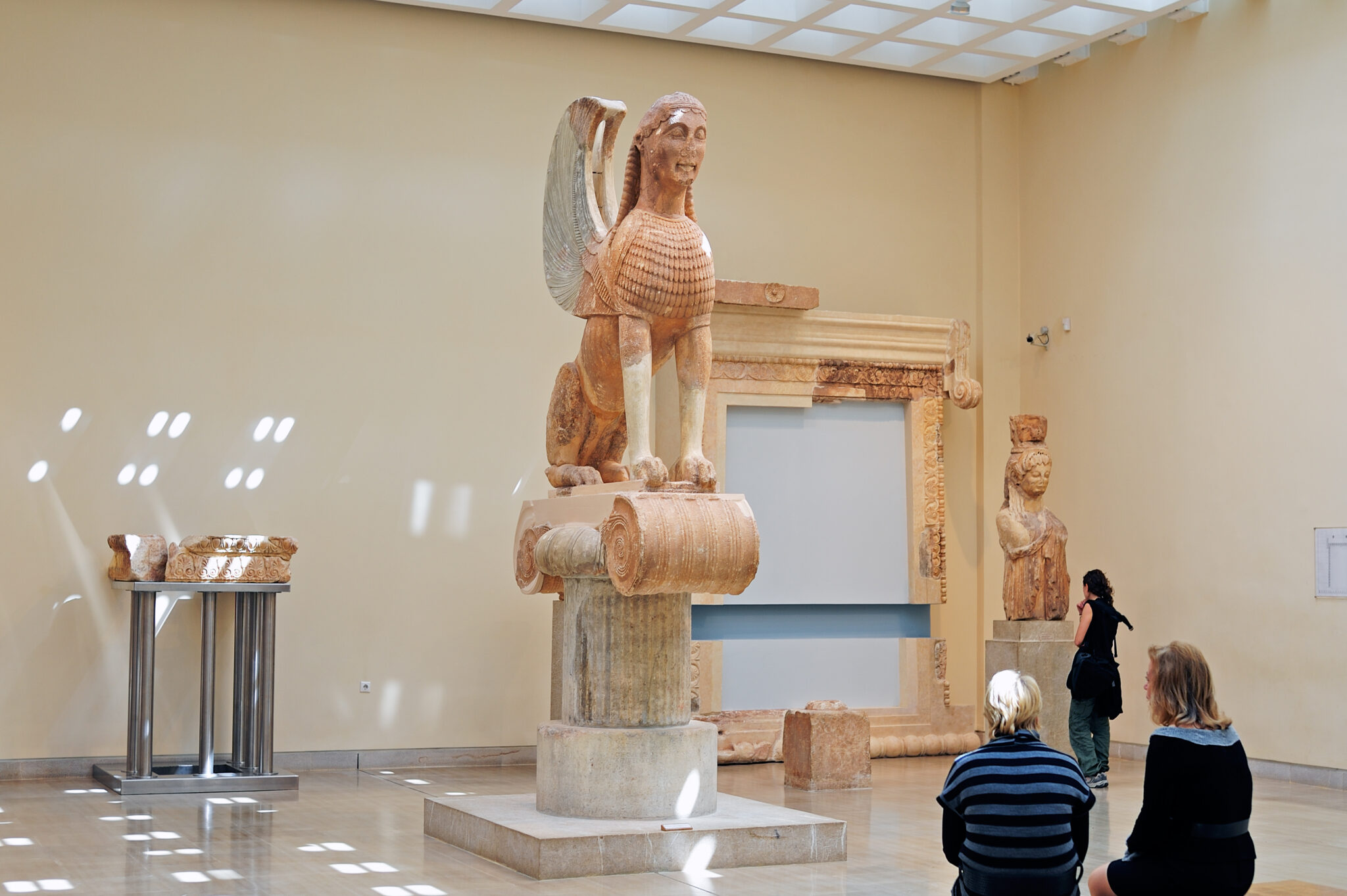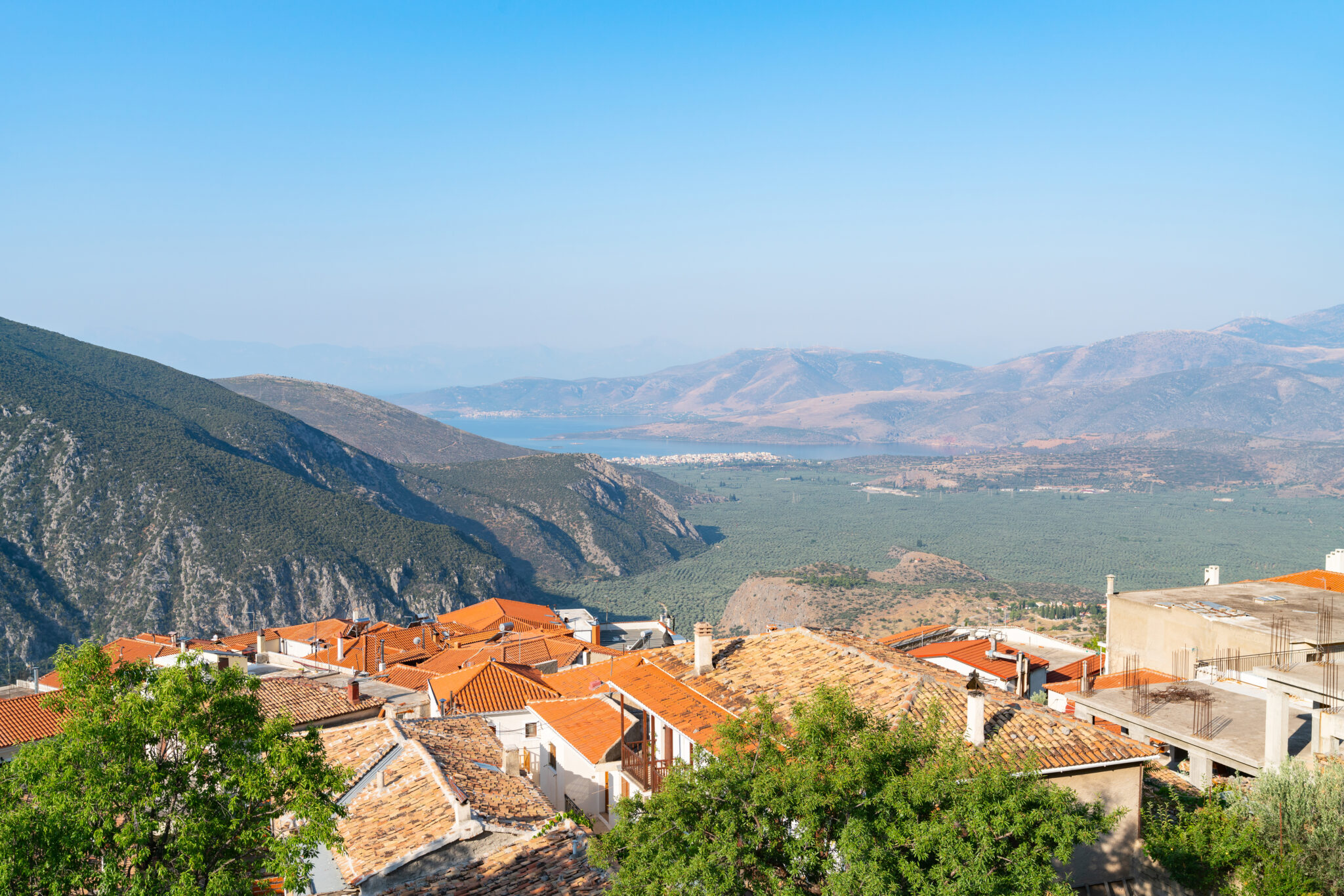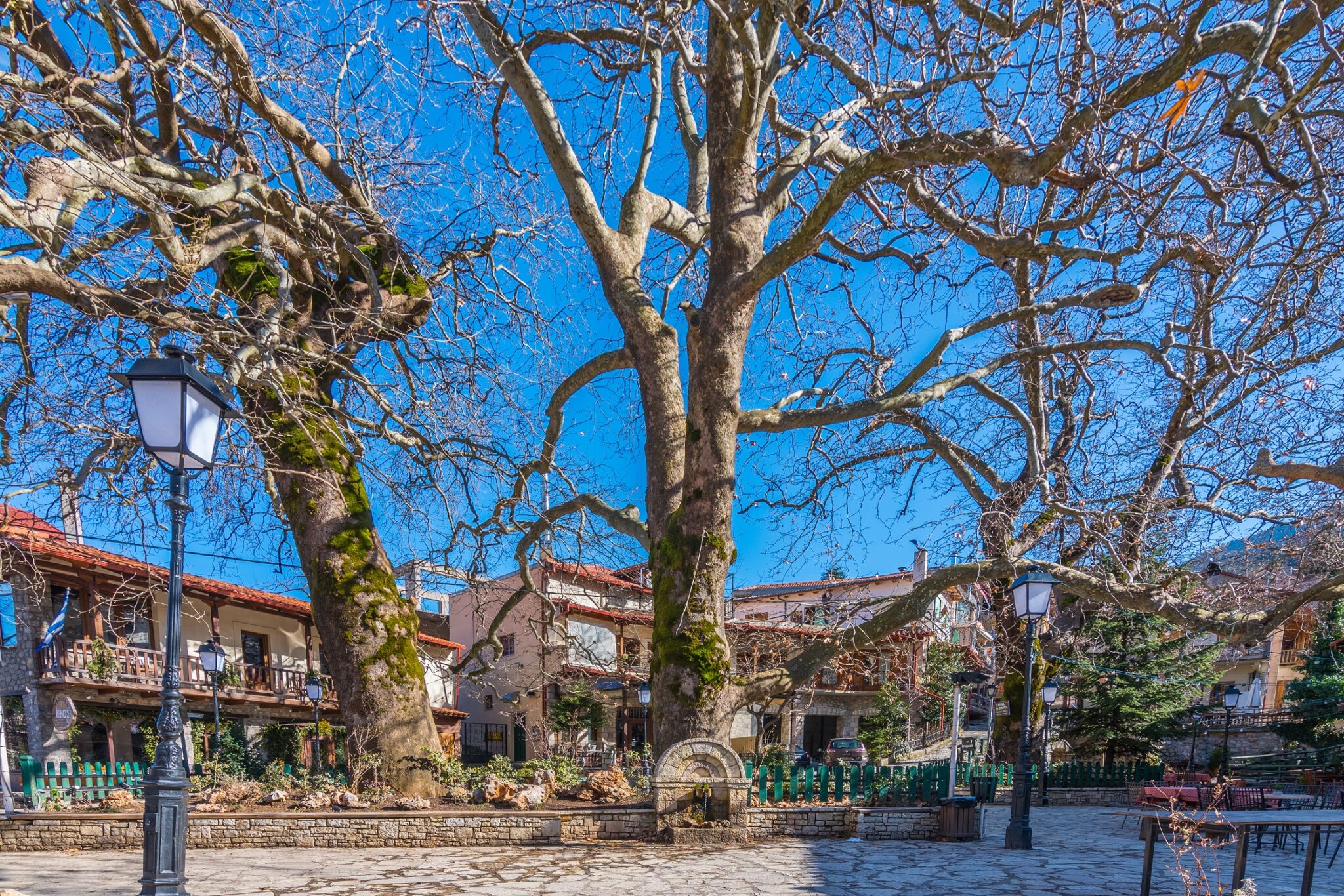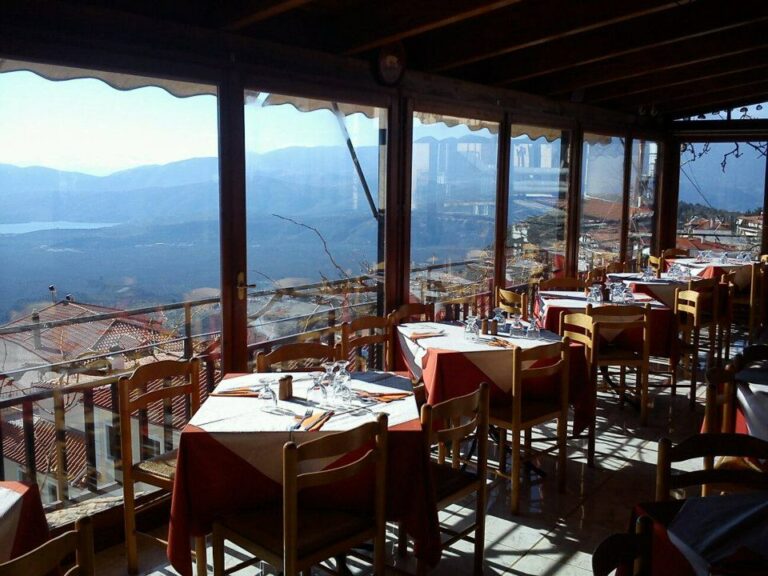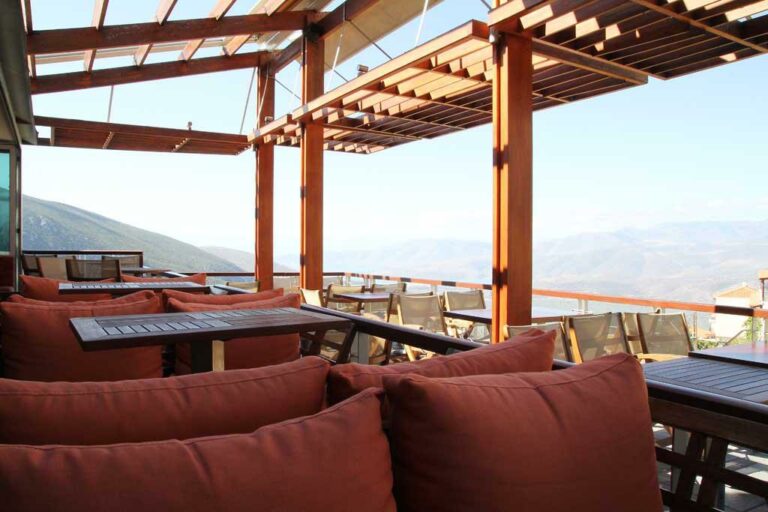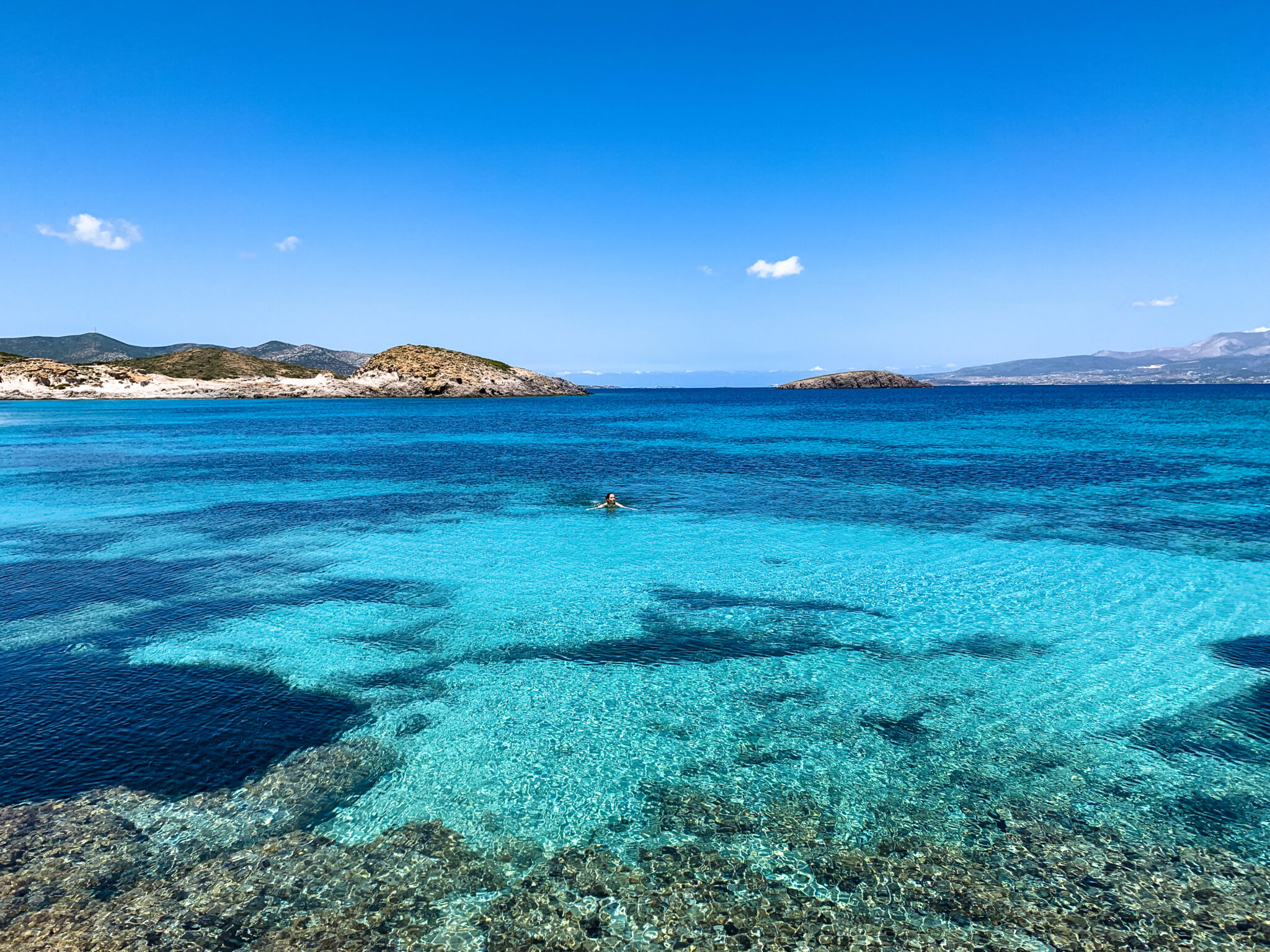A gorgeous route with the village of Delphi at its end, and one of the most significant archaeological sites in Greece.
A daytrip to Delphi is always great in autumn. It’s very close to Athens, the road is good, despite the turns, the nature is wonderful and the end destination, the archaeological site of Delphi, is magical.
There are two main routes to Delphi. You can take the national road toward Livadia and get off the highway at the Kastro exit, or you can go through Thiva, Aliartos and Agia Paraskevi, a route with more interesting views. If you’ll in west Attica, you can also go via Magoula and Erithres. In any case, the duration of the trip is about 2.5 hours.
We will describe the route on the Athens-Lamia national road. Your first stop should be in Orchomenos, and in particular at the Archaeological Park that is now being developed. The park comprises of an ancient theatre that dates to the 4th century BC, the tholos tomb of Minyas, the mythical king of Orchomenos, dating to 1250 BC (a path, a lintel leading to a circular building with a conical roof and a small chamber with a stone carved roof) and an exquisite Byzantine monument, the church of Skripou, dating to the 9th century. In addition, in the wider perimeter of the park, there are ruins of temples where Dionysus and Asclepius are believed to have been worshiped, as well as parts of the wall fortification of the 4th century BC city, as well as parts of a tower.
Another beautiful and cool walk is a visit to the Three Charites springs. Walk on the pedestrian street that starts across from Panagia Skripou church and goes along the Mavropotamos river and you’ll see water running off the rocks and at some spots even springs of water.
If you have time, you can also stop at Krya, Livadia. The landscape there is lovely, the river, the mini waterfalls, the streams, the watermills, the tall plane trees, the stone bridges, the Catalonian tower and the oracle of Trophonius compose a fairy tale setting. After cooling off at Krya, you’ll get in the car and head to your final destination. You’ll pass by Arachova, but don’t stop, there’s no time if you want to visit the archaeological site, and, after all, Arachova is a destination for a separate trip. After about 12km, around 15min drive from Arachova, you’ll arrive at the parking lot of Delphi.
The ancient Greeks considered Delphi to be the centre of the earth. According to mythology, Zeus released two eagles, one to the East and one to the West to discover the navel of the earth, and the two eagles met in Delphi. So, this is where the most important place of antiquity was, whose fame had spread in other countries like Syria and Armenia, as the tributes found in the excavation show. Apollo was worshiped here, while at first there was a temple dedicated the Mother Earth, guarded by the serpent Python. However, Apollo killed Python and then built his own temple. Specifically, the Cretans who arrived in Delphi accompanied by Apollo in dolphin form built the temple.
The High Priestess was called Pythia and had the obligation to deliver the oracles to the mortals. After purifying herself in the Castalian Spring, that is right next to the archaeological site, next to the street, she would enter the temple, chew bay leaves and in a trance state she would utter incomprehensible words that a group of priests and priestesses would turn into a meaningful oracle. It is believed that the oracle with its prophecies played a big part in the Argonautic campaign, the Trojan war, and the establishment of Greek colonies. The temple thrived between the 6th and 4th centuries BC, while it stopped operating in 394 AD by order of the Byzantine emperor Theodosius I.
The ticket costs €12 – €6 reduced– and it includes entrance to the archaeological site and the museum. I recommend starting at the tholos of Athena Pronaia and the Gymnasium located across the museum, lower than street level and then go up to the main archaeological site where the temple of Apollo, the ancient theatre, the stadium, the remains of various city-states and the museum are located.
The path is not easy so make sure you wear proper shoes, the site spreads on a rather steep hill slope. This means that, as you go up, the view of the surrounding mountains and the olive groves below is gorgeous, while the place’s energy will help you understand why the ancient Greeks chose this place for the temple. Just before you reach the stadium, the highest up location, turn to back to admire all the monuments below. It’s a truly stunning sight.
After stopping at the café to catch your breath, visit the museum. There are some of the most significant ancient art findings on display here in different sections of the museum, spanning from the 2nd millennium BC, that is before the establishment of the temple, until late antiquity. Some of the most impressive exhibits include the bronze statue of the Charioteer of Delphi, the marble Sphinx of Naxos 2.32m tall, the Siphnian and Athenian treasures, the archaic and classical facades of the Temple of Apollo and the tholos of Athena Pronaia (open daily 08:00-20:00 until 31/10 ).
After you’re done with the archaeological site and the museum, you need to visit the village. Walking around among the beautiful neoclassical buildings and enjoying the magnificent view that reaches Itea and Galaxidi is a must before you sit at one of the taverns of cafés in the village. But make sure to also visit the Museum of Delphic Festivals that is housed in the old stone house of Angelos Sikelianos. This is where, in 1927, the first Delphic Festivals were held, together with a performance of Prometheus Bound by Aeschylus in the ancient theatre and of the Pyrrhic dance in the stadium. While in 1930, Aeschylus’ The Suppliants were performed. The museum is very close to the archaeological site, it’s surrounded by vegetation and also has an amazing view. It was built between 1924-25, but less than a decade later, since 1933 when Eva Sikelianou returned to America, the house gradually decayed and in the 1960s it was expropriated and given to the Greek National Tourism Organization while now it belongs to the municipality of Delphi. There are Angelos Sikelianos’ documents and personal items on display at the museum, costumes and photographs from the Delphic Festivals, Eva Palmer’s loom etc. (Friday-Sunday., 10:00 – 14:00, tel.: 0030 2265082175).
If you want to take advantage of your road trip to the fullest, you won’t go back the same way you came, passing Arachova, Livadia etc. The longest and most interesting route is by Amfissa, Vargiani, Gravia and Mariolata, but since it gets dark early now, you won’t be able to enjoy it to the max (and it’s great for another day trip, for another time). But you can go via Agoriani and stop at the main square with the giant plane trees and the running waters, and you can take a picture at the waterfalls that’s nearby, and you can pass by Amfiklia to return to Athens. The part after Livadi, Arachova, up until Agoriani is covered in fir trees. This route may have a few more turns, but it’s worth it. And there’s also the option of taking the road that goes up to the ski resort, for a route among even thicker vegetation, and then via Amfiklia and Orchomenos get back on the national road.
Food
Vakhos: amazing view from its veranda and great dishes. Traditional casserole dishes and grilled meat, while in the winter you might be lucky and get boar or deep (Delphi, tel.: 0030 2265083186).
To Patriko mas: a mulberry tree provides the perfect shade to this paved veranda with the unobstructed view that you can enjoy while eating good casserole dishes and grilled meats. (Delphi, tel.: 0030 2265082150)
Dion: Well-kept tavern serving food ranging from moussaka to lamb chops. (Delphi, tel.: 0030 2265082790).
Café
Telescope Café: the balcony has a unique view that goes all the way to the Corinthian gulf, while a telescope allows you to see even further. If you get hungry, they also serve food. (tel.: 0030 2265083123).
Café Melopoleio: elegant café with outdoor seating and a menu that includes, apart from coffee and desserts, some savoury snacks. (tel.: 0030 2265083247).
Agora Cafe: an all-day café with a great view that serves coffee, cocktails and even pizza. (tel.: 0030 2265083116).
Read also:
Asterousia: The unknown mountain range of Crete
Trekking at an ‘open-air museum’ of geology and ancient technology in Greece
Fraktos Forest on the Rodopi mountain range – A magnificent landscape in a remote part of Greece



